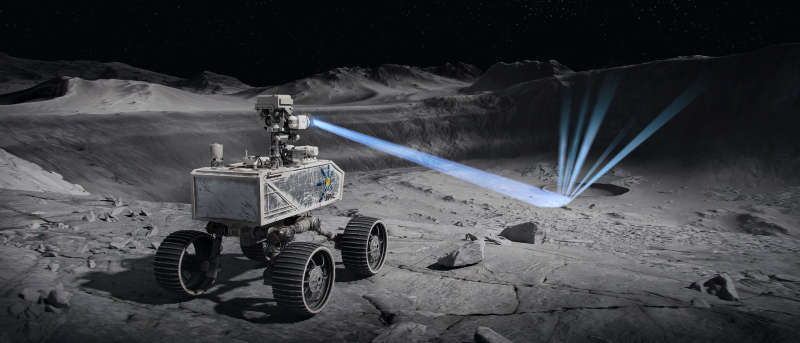 US-based Ultra Safe Nuclear’s (USNC’s) EmberCore technology has been selected by NASA to participate in the NASA Innovative Advanced Concepts (NIAC) programme. The Phase 1 study will be on "EmberCore Flashlight: Long Distance Lunar Characterisation with Intense Passive X- and Gamma-ray Source”. It will be led by Dr Chris Morrison, Chief Engineer, Radioisotopes supported by Dr Thomas Prettyman, Senior Scientist at the Planetary Science Institute.
US-based Ultra Safe Nuclear’s (USNC’s) EmberCore technology has been selected by NASA to participate in the NASA Innovative Advanced Concepts (NIAC) programme. The Phase 1 study will be on "EmberCore Flashlight: Long Distance Lunar Characterisation with Intense Passive X- and Gamma-ray Source”. It will be led by Dr Chris Morrison, Chief Engineer, Radioisotopes supported by Dr Thomas Prettyman, Senior Scientist at the Planetary Science Institute.
EmberSource is based on UNSC’s Ember nuclear chargeable ceramic. This is being developed for ultra-high-speed propulsion in space and for survive-the-night capabilities on the lunar surface. By integrating EmberSource into a specially designed casing, x-rays that would normally be contained by shielding are instead released through a controllable aperture. As they interact with the lunar surface and reflect into a sensor, they can provide valuable information about the surface and what lies beneath.
Dr Prettyman says the technology “will enable characterisation of the structure and composition of the lunar surface in unprecedented detail”. He adds: “The capabilities for standoff analyses of elemental composition and operation in darkness are potentially game changing."
A rover equipped with an EmberSource X-Ray Flashlight could use its x-rays to map the composition of broad areas of the lunar surface from a distance. A beam several orders of magnitude stronger than any x-ray source previously deployed in space, combined with the mobility of a rover, would make it possible to map the composition of the lunar surface in far greater detail than ever before.
USNC’s Chris Morrison says the EmberSource X-Ray Flashlight “represents the right combination of cutting-edge technology and groundbreaking science, which the NASA NIAC programme is designed to foster”. The new capabilities provided by this technology “could revolutionise lunar exploration by giving us the clearest picture we’ve ever had of what resources are available on the Moon, hopefully paving the way for a sustainable human presence there”.
The EmberSource X-Ray Flashlight being developed for Phase 1 NIAC is intended to be used in two distinct locations on the moon: Shackleton Crater, and Mare Tranquillitatis. In these places, it could be used to search for significant amounts of water and other volatile materials that essential to make the Moon habitable for humans long-term.
The Planetary Science Institute, based in Tucson, Arizona, is a private, nonprofit corporation dedicated to solar system exploration. It was founded in 1972. Its scientists are involved in numerous NASA and international missions
USNC is developing company the?Micro-Modular reactor?TRISO-based Fully Ceramic Micro-encapsulated nuclear fuel, as well as nuclear power and propulsion technologies for space exploration.
Image: Artist's impression of the EmberCore Flashlight mounted on a rover (courtesy of USNC)



